Content
Pasteur, Jenner and the history of vaccines
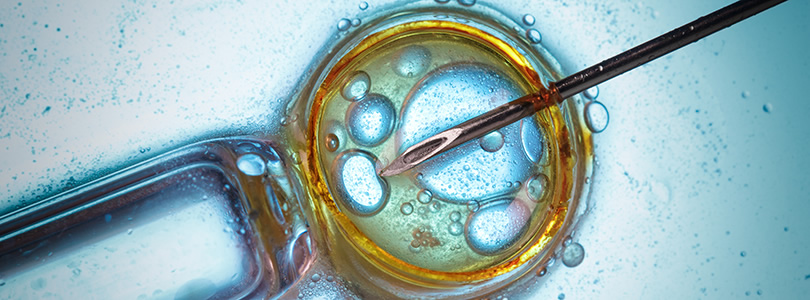
Immunisation then and now
During the Covid pandemic, there were few health issues that preoccupied mankind as much as immunisation. One of the first spectacular vaccination successes occurred 140 years ago: on 6 July 1885, Louis Pasteur began immunising a person infected with rabies in Paris.
Joseph Meister, a nine-year-old baker's son from the village of Meisengott (Maisonsgoutte) in Alsace, had been bitten by a rabid dog. At the time, this was almost a death sentence, because once rabies had broken out, there was no medicine that could help (this is still the case today). However, the village doctor remembered reading about a chemist's successful experiments with a rabies vaccine for dogs. Meister's mother immediately set off with her son to Paris in search of this man.
Daring experiment
In fact, Louis Pasteur had until then immunized dogs against rabies in experiments, but not yet humans. In many transmission experiments on rabbits and dogs he had proved that the pathogen (which could only later be identified as a virus) attacks the nervous system. Since the incubation period of rabies is one to two months, even after infection there may be enough time for immunisation to prevent the outbreak. From the dried spinal cord of an infected rabbit, Pasteur obtained a weakened infectious suspension, which he injected into his experimental animals at systematic intervals and dosages. Afterwards the dogs remained immune to the disease.
However, Pasteur had not yet successfully tested a post-exposure prophylaxis. Pasteur, who was not a physician, had also long shied away from using it on humans. But when Meister's mother and the boy came to him, he dared to try to vaccinate after consulting doctors.
Rescue from rabbit bone marrow
Joseph Meister first received an injection with a suspension dried for 14 days, the next day a dose dried for 13 days, and finally, over a period of ten days, twelve injections of increasingly higher virulence. Rabies did not break out in him, he survived and was allowed to return home to Alsace on 25 August 1885.
Two months later Pasteur published the cure of his young patient and caused a sensation. To this day, Meister's treatment is still considered a milestone in the history of medicine. Infected people from all over the world flocked to Pasteur for treatment; masses of donations enabled him to found his own institute.
However, Meister's cure - if it really was one at all - was not really very meaningful. Pasteur himself assumed that only 10 percent of all people bitten by rabid dogs were actually infected with the disease. Moreover, one single case cannot sufficiently prove the effectiveness of a vaccination (which is one of the many reasons why the development of a corona vaccination takes a lot of time today: it must be tested on a sufficient number of people). In retrospect, however, it was scientifically proven that Pasteur's vaccination was indeed effective. Of Pasteur's many groundbreaking achievements, this one was perceived as perhaps the greatest; to this day, he is considered a national hero in France.
The father of the vaccination: Edward Jenner
The idea of protecting people from disease through vaccination existed long before Pasteur. The first, and to this day the greatest vaccination success was achieved by the English doctor Edward Jenner (1749-1823). At that time, smallpox (also known as leaf pox) was a very widespread and dangerous infectious disease and is said to have had a mortality rate of between 20 and 40 percent. Those who survived were often disfigured by the scars. However, it was known for a long time that nobody had to go through the disease a second time. This gave rise to the idea of inducing immunisation by means of targeted but attenuated infection. Jenner's predecessors included his colleague John Fewster (1738-1824) and Wilhelm Bernhard Nebel in Heidelberg (1699-1748).
Cowpox was a variant of the disease that was harmless to humans and that almost everyone who had anything to do with cows had to go through at the time. Jenner therefore took up the idea of immunising a person with cowpox against human pox. On 14 May 1796 he vaccinated the eight-year-old James Phipps with serum from a pox pouch on the hand of a milkmaid. About six weeks later Jenner infected the boy with human pox, but he proved to be immune.
Children as guinea pigs
Jenner wanted to publish an article on this but the Royal Society refused because they felt that one test person was not sufficient. So Jenner kept on experimenting, mostly on children, including his own son. Jenner's success ultimately proved him right. Since he owed his vaccine to cows (Latin "vacca"), Jenner called it "vaccine". He was sure, "My method will eradicate smallpox." Indeed it did, but it was to take nearly 200 years.
By the way, Jenner renounced a patent for his method because it should remain affordable for the poorer population. The scientific background of immunization only became clear at the end of the 19th century when it was discovered that microorganisms called "bacteria" could cause infectious diseases. Pasteur formulated his "germ theory" in 1864, Robert Koch discovered the pathogen bacilli of anthrax and tuberculosis in 1876 and 1881 respectively. It was not until the 20th century that science began to be gradually understood viruses.
Bavaria as vaccination pioneer
The idea of vaccination spread rapidly. After some states of the USA had made the start, the Kingdom of Bavaria introduced compulsory vaccination against smallpox as early as 1807; Russia followed in 1812. In the German Empire, however, smallpox vaccination only became compulsory in 1874. Finally, the ![]() WHO declared smallpox officially eradicated in 1979. Unfortunately, it is still the only infectious disease that has been completely eradicated. Despite intensive vaccination efforts, other pathogens still pose a threat, such as polio, at least in isolated cases.
WHO declared smallpox officially eradicated in 1979. Unfortunately, it is still the only infectious disease that has been completely eradicated. Despite intensive vaccination efforts, other pathogens still pose a threat, such as polio, at least in isolated cases.
Right from the start, the practice of vaccination also had determined opponents. Rational arguments play a rather subordinate role; opponents of vaccination were (and still are) driven more by ideological reasons. Even the Reichsimpfgesetz (German Imperial Vaccination Act) of 1874 was highly controversial. To this day, there is sometimes fierce resistance to any compulsory vaccination, as was recently demonstrated by the criticism of compulsory measles vaccination for children in day-care centres or by the anti-vax protesters during the Corona pandemic.
The problem of growing "vaccination fatigue“
More problematic than the comparatively manageable number of radical opponents of vaccination are, however, the "vaccination-weary" people in this country: since, for example, childhood diseases such as chickenpox and rubella hardly ever occur today thanks to the vaccinations, the understanding of the necessity of protective vaccination is declining. Vaccinations are threatened by their own success: "Out of sight, out of mind" - the threat from traditional childhood diseases seems abstract and small. One of the consequences of this negligence is that measles is still - or rather: again - a global problem. ![]() According to WHO, there were around 9 million cases in 2021; around 128,000 people died from it worldwide.
According to WHO, there were around 9 million cases in 2021; around 128,000 people died from it worldwide.
Fully vaccinated GDR
Vaccinations have always been a political issue: Napoleon immediately had his soldiers protected against smallpox with Jenner's vaccination, although he was at war with England. Pasteur and his French colleagues rejected the research of German scientists (and vice versa) against the background of the hostility of their countries. And during the "Cold War", East and West vied for the better vaccination strategy. The GDR in particular wanted to demonstrate the superiority of the socialist system with a thoroughly vaccinated and healthy population. Eastern Germany even offered "vaccination development aid" to West Germany, where at times only the smallpox vaccination was obligatory, while polio was still a serious problem.
Lucrative business
So the world had enough problems with aggressive viruses before Corona, but the pandemic spurred research into suitable vaccines on an unprecedented scale. All over the world, people were hoping for a vaccine against SARS-CoV-2 in 2020.
Under normal conditions, the development of a vaccine takes years, perhaps decades - if one is successful at all. Against HIV, for example, there is still no suitable vaccine on the market even after decades (but see ![]() EP3099322A1, among others!).
EP3099322A1, among others!).
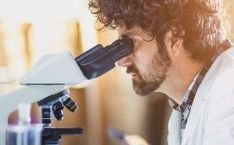
There was justified hope that the heirs of Pasteur and Jenner would succeed. In 2020, Governments around the world invested enormous sums in companies working on vaccines. The results are well known: Several vaccines came on the market and helped to ease the pandemic situation - but not without sometimes heated debates about possible vaccination constraints or loosened patent protection for vaccines. At the end of 2021, the company BioNTech received the Deutscher Zukunftspreis (German Future Prize) for its Covid vaccine. In 2023, the "masterminds" behind the mRNA vaccination, Katalin Karikó and Drew Weissman, were awarded the Nobel Prize in Medicine ("for their discoveries concerning nucleoside base modifications that enabled the development of effective mRNA vaccines against COVID-19").
The mRNA path to unimagined possibilities
The mRNA approach gives rise to great hopes in current medical research. Above all, the ultimate goal is a vaccination against cancer. Some vaccinations against certain types of cancer already exist, such as the HPV vaccination against cervical cancer. This is also constantly being further developed, as new patent applications show (e.g. ![]() US12214034B2 (3,65 MB),
US12214034B2 (3,65 MB), ![]() US020250177510A2 (2,6 MB)). An application such as
US020250177510A2 (2,6 MB)). An application such as
mRNA vaccines are also being developed against other diseases, such as rabies ( ![]() CN119530252A (2,16 MB)), as Pasteur once did, or tuberculosis, whose pathogen was once identified by Robert Koch (
CN119530252A (2,16 MB)), as Pasteur once did, or tuberculosis, whose pathogen was once identified by Robert Koch ( ![]() KR102025057173A (1,22 MB)). Vaccine combinations designed to protect against Covid and Mpox have also recently been registered (
KR102025057173A (1,22 MB)). Vaccine combinations designed to protect against Covid and Mpox have also recently been registered ( ![]() US12324835B1 (0,99 MB)).
US12324835B1 (0,99 MB)).
Numerous other vaccines are currently being researched or trialled worldwide. Jenner and Pasteur's dream of protecting humanity from serious diseases through immunisation lives on.
Picture: iStock.com/Nevodka, Public domain, via Wikimedia Commons, Paul Nadar (Public domain, via Wikimedia Commons), Ernest Board (Public domain, via Wikimedia Commons), James Illray (Public domain, via Wikimedia Commons), DEPATISnet, iStock.com/sanjeri
Last updated: 10 December 2025

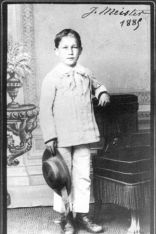
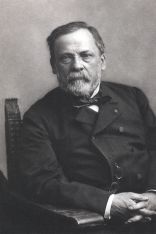
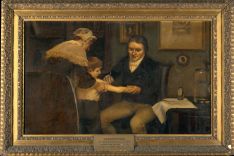
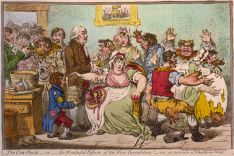
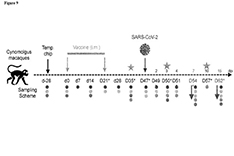
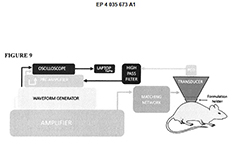
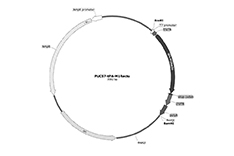
Not only protecting innovations
Social Media